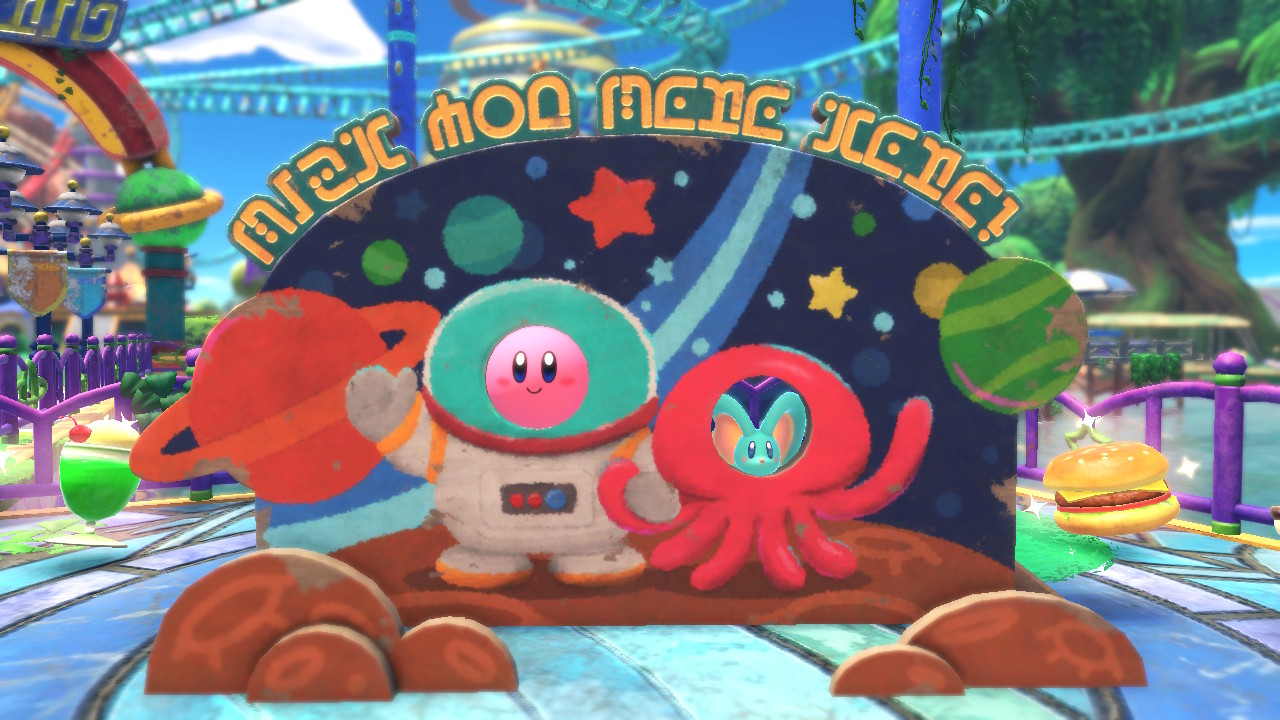TechRadar Verdict
Kirby and the Forgotten Land is an ambitious jump to the third dimension that spotlights the pink puffball's perfect platforming. While its Mouthful Mode segments are disappointingly linear, you'll be coming back for several chomps of this tasty treat.
Pros
- +
Brilliant platforming
- +
Fully 3D levels
- +
Outrageously adorable
Cons
- -
Linear Mouthful Mode segments
- -
Repetitive boss fights
Why you can trust TechRadar
Time played: 20+ hours
Platform: Switch
Kirby and the Forgotten Land is a joyful family platformer for those who like gawking at cute, cuddly characters. It’s the children’s ball pit of Nintendo games, with every sharp corner padded over and every surface painted the colors of the rainbow. But that adorability is matched by its ambition. This is the boldest Kirby game yet, pushing the pink puffball into all manner of new dimensions and contorted shapes. For the most part, it works fabulously.
Kirby’s come to us, here in the real world, for his latest outing – an interdimensional vortex has hoovered up the residents of Planet Popstar and spat them out on an abandoned version of Earth. That leaves you to saunter across the vibrant remains of human civilization to collect Kirby’s missing Waddle Dee chums, while squaring off against the villainous Beast Pack who claim ownership of the planet.
Most of that involves doing what Kirby does best – inhaling enemies to absorb their abilities, jumping and gliding through tight platforming segments, and tackling big bosses at the end of each stage. Collectibles are strewn across every level, and hidden challenges keep you returning for more.
Kirby and the Forgotten Land price and release date
- What is it? The next Kirby game and his first 3D outing
- Release date: March 25, 2022
- What can I play it on? Switch
- Price: $59.99 / £49.99 / AU$99.95
A whole new 3D world
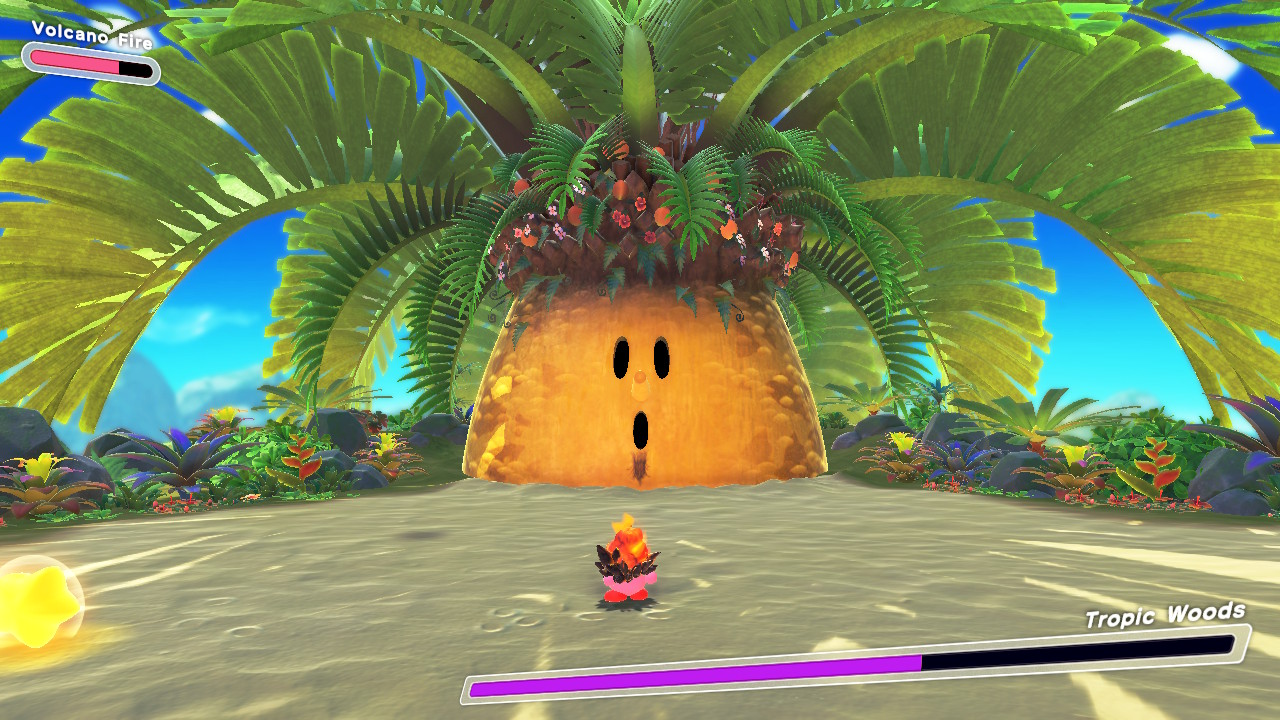
But this is no ordinary Kirby adventure, Forgotten Land is the first fully 3D Kirby game and developer HAL Laboratory isn’t afraid to remind you of that. Whether you’re circling the perimeter of a building or rocketing along a rollercoaster, the team’s done a fantastic job of using the extra dimension to full effect.
In many cases, entire levels are driven by novel mechanics that simply wouldn’t play as effectively in a 2D platformer. On one, you’re blown along the precarious rooftops of a Manhattan-esque skyline. In another, you must navigate a series of floating platforms spiraling across a tropical bay – jumping between safe spots that are moving on a curved path adds a new challenge to this platformer.
Each level feels varied without ever drifting too far from Forgotten Land’s core gameplay loop. You’re frequently encouraged to switch abilities, rather than stick to a firm favorite power all the way through a level. This is all done through subtle nods, such as needing to use specific power-ups to access secret rooms and collectibles.
While Forgotten Land isn’t too experimental, its simple but refined combat, alongside point-perfect platforming, goes a long way to sustain it. There are no cheap deaths or finicky level segments. And HAL Laboratory has done a great job of taking the core of Kirby and tweaking it just enough in each level to keep everything alive and pumping.
Sign up for breaking news, reviews, opinion, top tech deals, and more.
Each level feels varied without ever drifting too far from Forgotten Land’s core gameplay loop.
It helps that each level is concise. You could rocket through most of them in a handful of minutes if you weren’t on the lookout for hidden extras or collectible Figurines. Though, that’s not in the spirit of the game – much like the pink puffball, you should fill yourself to bursting on each stage. Every level is accompanied by a handful of optional Missions that can be completed to earn extra Waddle Dees, used to progress through the main story. They vary in scope from discovering hidden items, to defeating specific enemies, to beating bosses within a set time, and won’t eat up too much of your playtime. Keep your eyes peeled, and you’ll complete a good chunk of them without even trying.
Throw in the additional Treasure levels and there’s even more to dig through. These arcade-like challenges mix assault course with crash course, handing you a specific ability with which to complete a series of puzzles or combat challenges against the clock. They’re short, they’re not particularly challenging, and they earn you rewards. But we found they also functioned as engaging tutorials, effectively teaching us the special attacks of each ability, prompting us to use them in the main game.
Not a mouthful of possibilities
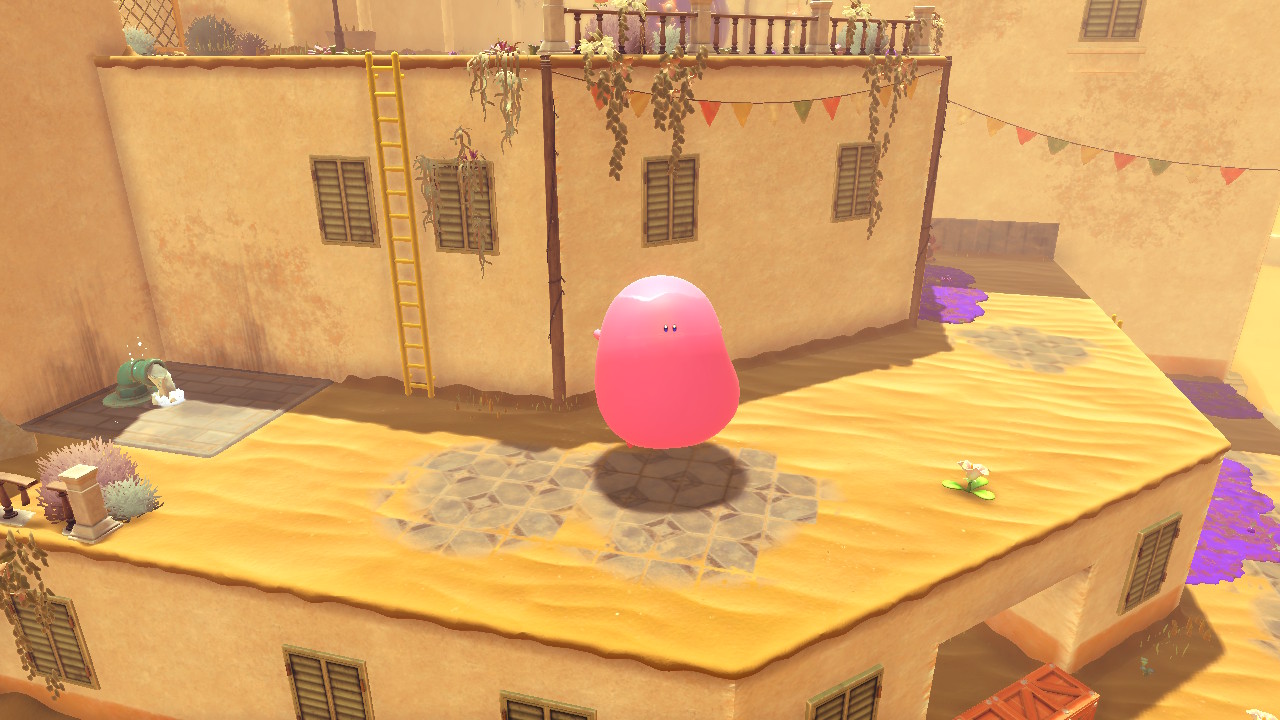
Undermining all this variety is the Forgotten Land’s linearity. The levels are dynamic and energetic, with only a few quiet moments to punctuate the more intense segments, but this is not a game that encourages experimentation on the part of the player. Outside of occasionally having to figure out which ability is most effective against an enemy, you can relax in the knowledge that you won’t have to do much thinking.
Compared to a game like Mario Odyssey, which encourages you to use power-ups to push against its seams, Kirby keeps you on the straight and narrow. You’ll load into an area, tear through its enemies, look for any secrets, and walk out the other side. Forgotten Land might not hold your hand, but nor does it remove the stabilizers.
By the end, we became annoyed that Forgotten Land wouldn’t let us experiment with the abilities in a sandbox.
That direction doesn’t stop Forgotten Lands from being fun, but it does become slightly grating in the face of Mouthful Mode, Kirby’s latest inhalation technique that lets him wrap his chops around inanimate objects to absorb their abilities. The roster of Mouthful Mode transformations is brilliant, letting you roll around as a pipe, blast your way through enemies as a make-shift air gun, waddle about as a huge water balloon, and more. Entire gliding minigames see you cruise through canyons, and roller coaster rides act as on-rails obstacle-dodging segments.
In our first playthrough of the game, the novelty of stretching Kirby’s malleable mouth around various objects of the world was a blast. But on the second run, we found the gimmick had worn thin. It was annoying to give up being a vending machine after 30 seconds and relinquish its soda-can-spewing ability, we wanted to use the ability for longer, to take these power-ups and push them in ways the game wasn’t letting me.
By the end, we became annoyed that Forgotten Land wouldn’t let us experiment with the abilities in a sandbox, but restricted their use to choreographed segments that required little thought from me.
All powered up
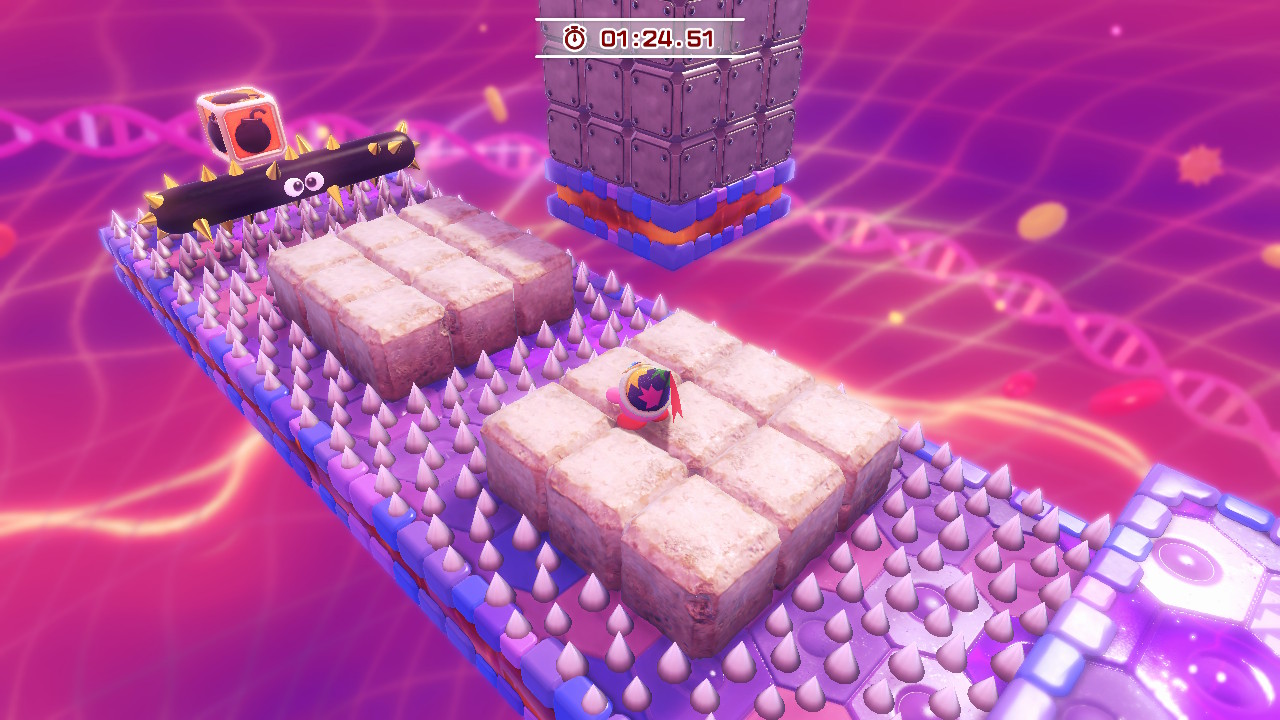
But if Kirby is only as good as the powers he swallows, his latest outing makes him truly shine. Forgotten Land adds two new abilities that haven’t appeared in past Kirby games: the Ranger, which hands you a gun to shoot from the hip or delicately aim at targets, and the Drill, which lets you burrow underground and spring up underneath the feet of your enemies.
Each power has a basic and special attack, and can be upgraded using Rare stars earned by completing Treasure levels. These upgrades make all the difference. Some abilities get small boons, like the Boomerang that lets you throw two disks instead of one. But others are drastically transformed, such as the Bomb, which lets you create powerful homing bombs to destroy whole areas of enemies by its third upgrade.
In several cases, previously underpowered attacks are transformed into incredibly powerful options, like the weak Hammer that becomes a tour de force of damage a couple of upgrades in. And the generous rate at which we were able to enhance the abilities encouraged us to test out the many options at our disposal.
If Kirby is only as good as the powers he swallows, his latest outing makes him truly shine.
That was slightly upended by the late game, however. After upgrading the Sword ability to its third stage, I found little reason to use anything else. Its powerful uppercut combo could reduce the health of almost all enemies significantly faster than any alternative option. Spending the final few levels doing little else than slashing my way through enemies put a damper on the game’s finale.
That damper soon turned into frustration. While Forgotten Land’s main bosses are wonderfully varied, many of its sub-bosses are recycled across levels and Treasure challenges. After completing nearly everything the game had to offer, we’d fought some of these secondary bosses close to 10 times. Squaring off against a dancing duck ballerina is a blast the first few times you do it, but becomes a repetitive slog after you’ve smacked her bill a hundred times over.
Dipping in and out
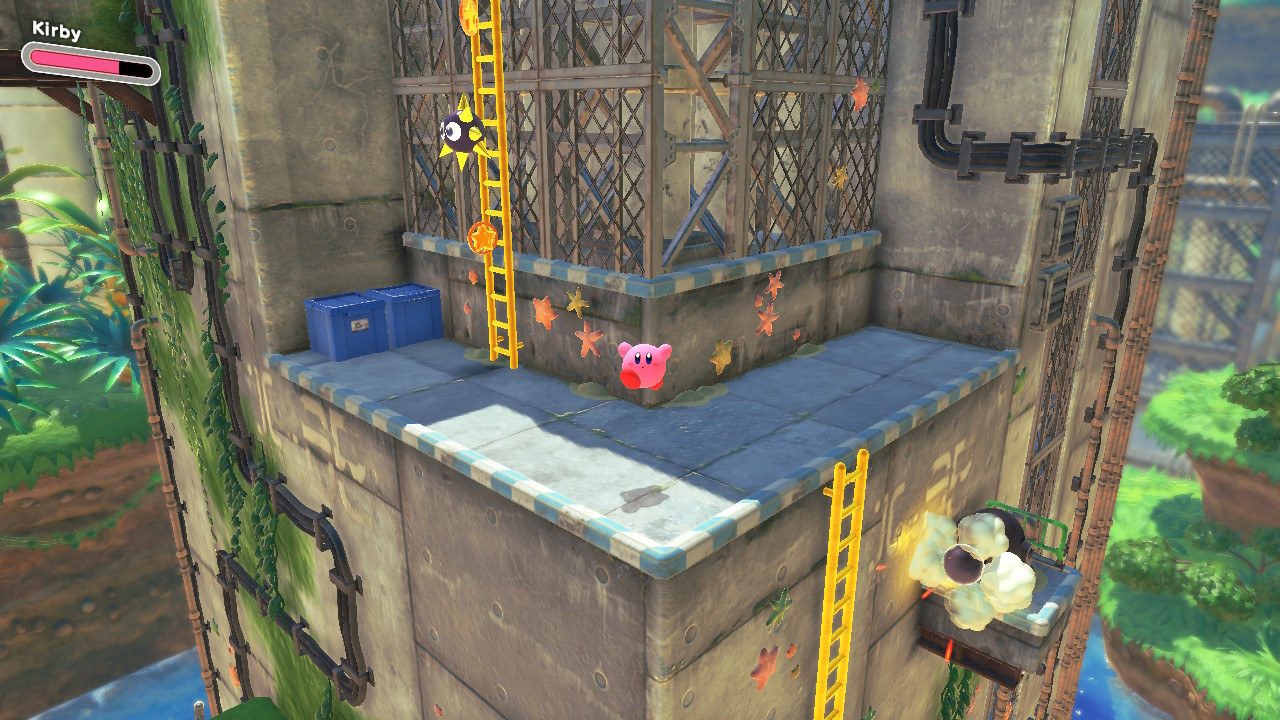
That’s doubly a shame because so much of Forgotten Land caters towards replayability. The brevity of each level makes their optional Missions a joy to attempt, and we found ourselves replaying several of the Treasure challenges just for the sheer fun of them, rather than their reward.
It’s the kind of game you can easily dip in and out of, catering particularly well to the portability of the Nintendo Switch. We would pick up the game for 10-minute sessions to collect a few extra Waddle Dees, as well as carve out entire afternoons to swallow up whole stages.
Between its precise platforming, brilliantly varied levels, and an almost ridiculous volume of adorability, Kirby and the Forgotten Land manages to spin a family-friendly adventure that’s as enjoyable to breeze through as it is to master. It doesn’t break down any barriers, nor experiment with any overtly offbeat concepts, but pushes the series in exactly the right direction.
Verdict
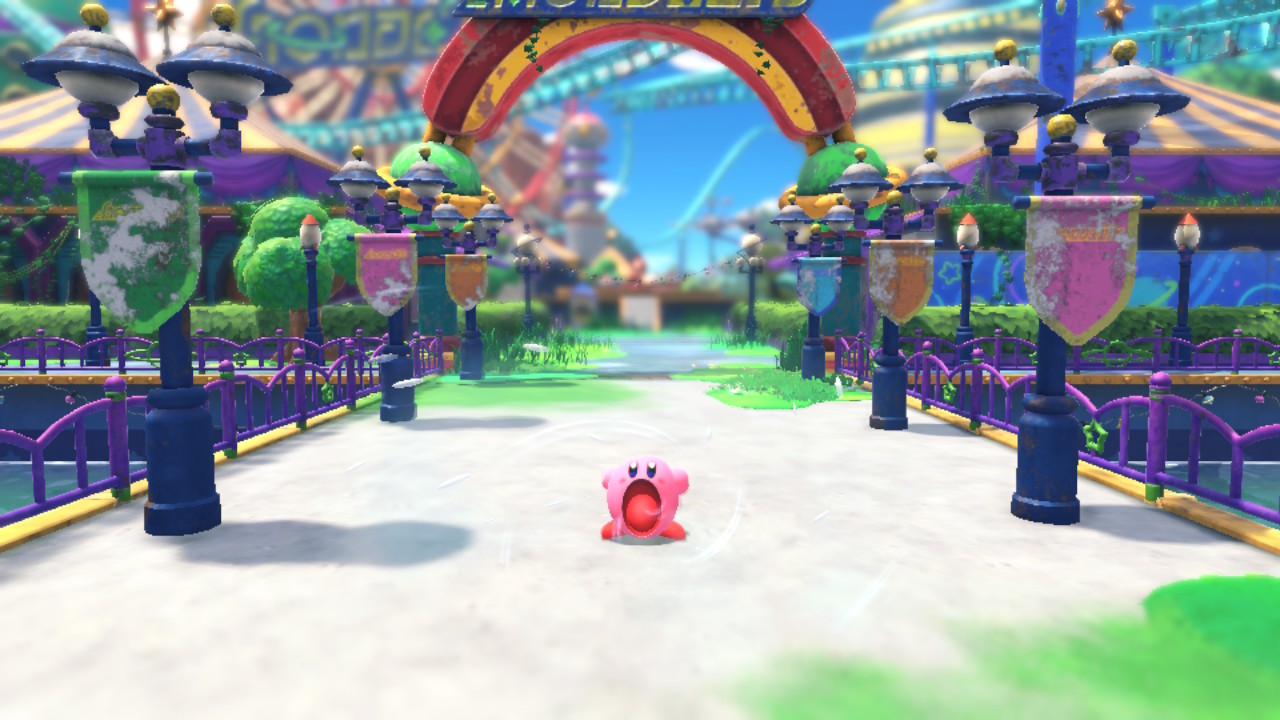
Kirby and the Forgotten Land is the most ambitious game of the series. Its jump to 3D is as smooth as its malleable main character, and its core platforming is so refined as to be the envy of other titles in the genre. While its linear levels may be irritating in the face of its creative Mouthful Mode transformations, that tension only speaks to how enjoyable it is to absorb your problems.

Callum is TechRadar Gaming’s News Writer. You’ll find him whipping up stories about all the latest happenings in the gaming world, as well as penning the odd feature and review. Before coming to TechRadar, he wrote freelance for various sites, including Clash, The Telegraph, and Gamesindustry.biz, and worked as a Staff Writer at Wargamer. Strategy games and RPGs are his bread and butter, but he’ll eat anything that spins a captivating narrative. He also loves tabletop games, and will happily chew your ear off about TTRPGs and board games.
